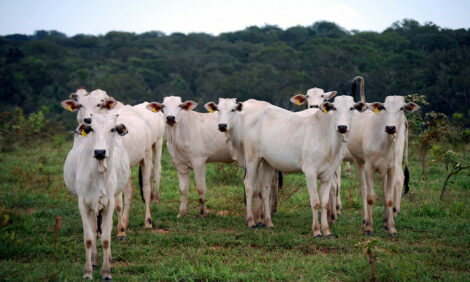



Nofima Project to Help Prevent Meat Discolouration
NORWAY - Meat products can contribute to food waste, especially when food becomes discoloured, but a new research project at Norway's fish research institute Nofima aims to improve packaging and prevent discolouration.The waste of food in Norway in 2013 was 46 kg per capita or more than 25 per cent of all food produced. About two thirds of the waste occurred at home by consumers, while smaller fractions can be attributed to retailers and food industry.
Meat and meat products comprise a relatively low amount of the total waste, but we should keep in mind that these commodities have a high price at retail and meat, in particular from cattle and sheep, contribute much to greenhouse gas emissions.
Despite the fact that consumers are wasting much food, the meat industry must take responsibility for finding solutions to reduce waste. The industry must seek to utilise larger parts of the carcasses, avoid quality defects, secure the shelf life of the products, and most importantly select suitable packaging systems that are well adapted for the different product requirements.
Consumers are continuously looking for better opening and closing systems for packages, and a larger variety of small packages for single households.
When meat and meat products end up as waste, the cause is often growth of micro-organisms with off-odour and in rare occasions by extra gas development in the packages.
Microbiological shelf life is in principal linked to three issues: low initial loads of micro-organisms, low and stable temperature in the chill chain, and use of packaging methods with absence of oxygen (O2) and high content of carbon dioxide (CO2).
Most meat and meat products will benefit from storage in high CO2. The exception is cooked sausages, which should have no more than 20 per cent CO2 and dry cured meat products that can be stored in pure nitrogen or vacuum.
Packaging in 100 per cent CO2 is the best, but is technically difficult because the packages can collapse by absorption of CO2 in the meat. The collapse can be prevented by using CO2 emitters that gradually produce extra CO2 the first days after packaging.
Discolouration is a common cause for waste of meat and meat products. Meat that is discoloured does not imply that the products taste bad or have any other quality defects, but consumers often discriminate against products that appear grey or brown. Discolouration can arise from faults in raw materials, processing or packaging.
Low levels of residual O2 in headspace of modified atmosphere packaged (MAP) meat is crucial for obtaining a red colour. Residual O2 is triggering the oxidation of the meat pigment myoglobin and is causing discolouration.
Anoxic MAP packages with fresh beef or lamb should contain no more than 0.1 per cent residual O2, at least 2-3 days after packaging. The level of residual O2 is often quickly reduced in packages with ground meat, but slowly in whole muscle meat.
Raw materials for ground beef should be selected from trimmings as fresh as possible, and without being frozen. Such meat has the ability for fast removal of residual O2, while frozen and thawed meat spends much more time to consume O2.
Salt is often used in levels of 1 per cent in ground meat in Norway, but is unfortunately restraining the consumption of O2, so ground meat without salt has a better colour in addition to being more healthy. Meat of pork and poultry is originally pale, and can tolerate higher levels of residual O2, at least 0.5 per cent.
Fresh cold cuts like Bologna sausage and cooked ham should have maximum 0.15 per cent O2 in the headspace to avoid discolouration. The combination of residual O2 in the packages and light at retail display is causing the discolouration, but these products are red for as long as kept in darkness.
To obtain 0.15 per cent O2 can be technically demanding, but can be achieved by increasing times for vacuum and flushing cycles in the packaging machines. For all packaging of cold cuts, films with high barrier properties against penetration of O2 must be used. Choosing light proof labels that are covering the upper surface of the packages can be an effective solution.
Dry cured sausages should not be exposed to too much residual O2 either. However, dry cured raw sausages contain bacteria from starter cultures and can therefore consume detrimental residual O2 over time by bacteriological activity. It is always helpful to store packages with dry cured sliced sausages at room temperature in darkness for some days after packaging.
High drip loss and exudate in packages are unfortunate at retail display and cause loss in sale. Meat may have reduced water binding capacity of genetic reasons or wrong handling before and at slaughter.
Moreover, liquid loss can be caused by pressure on the meat by extensive vacuum, or by squeezing the meat between the upper and lower films of MAP packages.
Such liquid loss can be lowered by reducing the degree of vacuum or filling more gas in MAP packages. Meat that has been sliced or cut is more prone to losses than whole muscle meat.
The new project for the industry is called "Improved packaging for lower food waste", is funded by the Research Council of Norway for 2015-17 and is managed by the fruit and vegetable company BAMA. In this project, Nofima will study measures for meat, fish and vegetables.
TheCattleSite News Desk


